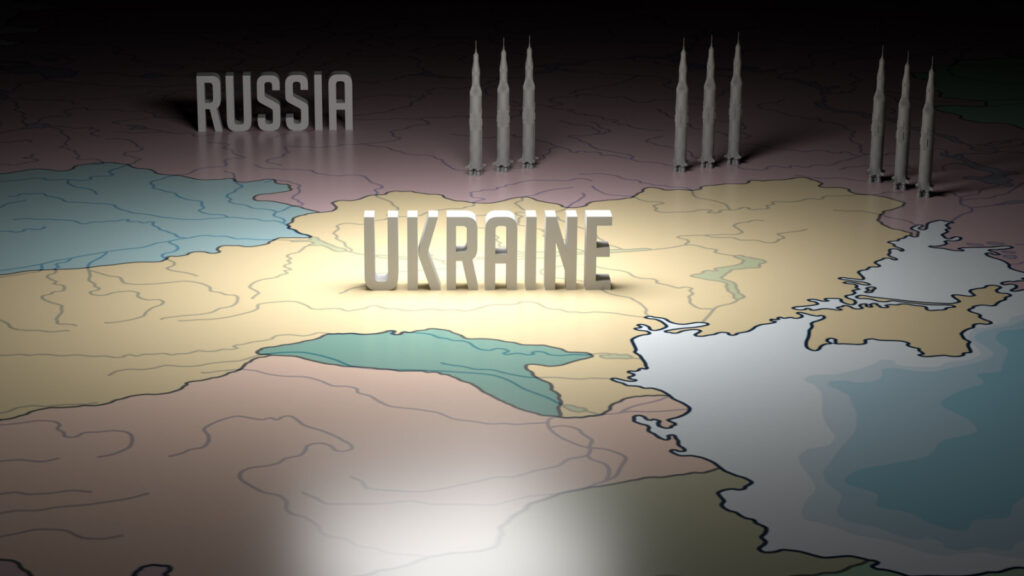Über verschiedene Zivilisationen und religiöse Traditionen hinweg haben die „Endzeiten“ stets Neugier und Spekulationen geweckt. Besonders die Bibel, vor allem das Buch der Offenbarung, präsentiert eine detaillierte und symbolische Erzählung von Ereignissen, die zu einem finalen Kampf zwischen den Kräften des Guten und des Bösen führen. In dieser vergleichenden Analyse untersuchen wir, wie aktuelle globale Ereignisse mit diesen Prophezeiungen übereinstimmen.
Daniels Vision von Weltreichen

Das Buch Daniel im Alten Testament enthält Visionen, die viele als Vorhersagen des Aufstiegs und Falls großer Reiche wie Babylon, Persien, Griechenland und Rom interpretieren. Einige Gelehrte argumentieren, dass diese Prophezeiungen spezifisch für historische Perioden sind, während andere sie als fortlaufend relevant sehen und möglicherweise moderne geopolitische Verschiebungen symbolisieren.
Der Aufstieg von Technologie und Wissen

Das Buch der Offenbarung sagt einen signifikanten Anstieg des Wissens voraus. Der beispiellose Zugang zu Informationen durch das Internet und Smartphones könnte als Erfüllung dieser Prophezeiung gesehen werden, da moderne Technologie die Erfassung und Verbreitung von Wissen transformiert hat.
Kriege und globale Konflikte

Matthäus 24:6 im Neuen Testament erwähnt „Kriege und Kriegsgerüchte“ als Zeichen der Endzeit. Heutige zahlreiche globale Spannungen und militärische Konflikte, wie die Situationen in Syrien, Nordkorea, der Ukraine und Israel, können als Übereinstimmung mit dieser biblischen Vorhersage gesehen werden.
Die rote Kuh und jüdische Eschatologie

In der jüdischen Tradition ist die Geburt einer roten Kuh mit dem prophezeiten Wiederaufbau des Dritten Tempels in Jerusalem verbunden. Die Geburt einer roten Kuh in Israel im Jahr 2018 belebte Diskussionen über diese Prophezeiung und verknüpfte sie mit zeitgenössischen Ereignissen.
Wiedergeburt Israels und Hesekiels Prophezeiung

Die Gründung Israels im Jahr 1948 wird oft als Erfüllung der Prophezeiung in Hesekiel 37 gesehen, die die Wiederherstellung der jüdischen Nation voraussagte. Dieses historische Ereignis wird von vielen als Schlüsselindikator im Zeitplan biblischer Endzeitszenarien betrachtet.
Die Weltwirtschaft in der Offenbarung

Offenbarung 13 beschreibt eine Ein-Welt-Wirtschaft, einschließlich eines Zeichens, das für den Handel notwendig ist. Zeitgenössische Diskussionen über globale Währungen, digitale Identifikation und elektronische Transaktionen könnten als Schritte in Richtung dieser Prophezeiung gesehen werden.
Aufstieg falscher Propheten in modernen Zeiten

Matthäus 24:24 warnt vor falschen Propheten, die große Zeichen und Wunder vollbringen werden. Dies könnte im Kontext moderner Kultführer und Personen, die wundersame Kräfte beanspruchen, interpretiert werden und spiegelt die Erfüllung dieser Prophezeiung wider.
Moralischer Verfall in der heutigen Gesellschaft

Der Brief von 2. Timotheus 3:1-5 beschreibt eine Zeit weit verbreiteter Selbstsucht, Gier und Unmoral. Die aktuellen Trends zu Materialismus und moralischem Relativismus können als Echo dieser biblischen Verse gesehen werden.
Verbreitung des Evangeliums weltweit

Matthäus 24:14 sagt, dass das Evangelium weltweit gepredigt wird, bevor die Endzeit kommt. Die extensive Reichweite der Missionsarbeit und die Nutzung des Internets für Evangelisation deuten darauf hin, dass diese Prophezeiung näher an der Erfüllung ist als je zuvor.
Das Austrocknen des Euphrat

Offenbarung 16:12 sagt das Austrocknen des Euphrat voraus, ein Vorläufer für das Kommen der „Könige aus dem Osten“. Der jüngste Rückgang der Wasserstände des Flusses, bedingt durch den Bau von Staudämmen und den Klimawandel, hat diese Prophezeiung in den Fokus gerückt.
Globale Allianzen und das letzte Imperium

Daniels Visionen in den Kapiteln 2 und 7 zeigen ein letztes Weltreich, das oft als Mischung aus starken und schwachen Elementen interpretiert wird, ähnlich wie Eisen mit Ton gemischt. Dies könnte den aktuellen komplexen und oft instabilen geopolitischen Allianzen und wirtschaftlichen Partnerschaften entsprechen.
Zunehmende Verfolgung von Gläubigen

Matthäus 24:9 erwähnt die Verfolgung von Gläubigen, ein Phänomen, das zunehmend in Regionen wie China und dem Nahen Osten berichtet wird und mit dieser biblischen Vorhersage übereinstimmt.
Astronomische Zeichen und Endzeiten

Lukas 21:25 bezieht sich auf Himmelszeichen als Indikatoren der Endzeit. Astronomische Ereignisse wie Blutmonde und Sonnenfinsternisse werden oft in diesem Zusammenhang interpretiert.
Fortschritte in schneller Fortbewegung

Daniel 12:4 erwähnt, dass Menschen schnell über den Globus reisen werden, eine Prophezeiung, die mit der Entwicklung fortschrittlicher Verkehrstechnologien wie Hochgeschwindigkeitszügen und kommerziellen Raumfahrten in Resonanz steht.
Einheitliche Sprache und globale Kommunikation

Die Geschichte des Turms von Babel in Genesis 11, die die Teilung der Sprachen erzählt, steht im Kontrast zum modernen Trend, Englisch als globale Verkehrssprache zu verwenden und zu den Fortschritten in der Übersetzungstechnologie, die möglicherweise diesen Aspekt der biblischen Prophezeiung erfüllen.
Ungewöhnliches Tierverhalten als prophetisches Zeichen

Hosea 4:3 sagt Veränderungen im Verhalten von Tieren und Massensterben voraus. Berichte über ungewöhnliches Tierverhalten und signifikante Veränderungen in Wanderungsmustern könnten als Übereinstimmung mit dieser Prophezeiung gesehen werden.
Der globale Ruf nach Frieden und Sicherheit

1. Thessalonicher 5:3 spricht von einer Zeit, in der die Menschen nach Frieden und Sicherheit streben. Der zeitgenössische Fokus auf globale Friedensinitiativen und Abrüstungsdiskussionen könnte als Erfüllung dieser Prophezeiung interpretiert werden.
Skepsis und Spott über Endzeitprophezeiungen

2 Petrus 3:3-4 sagt voraus, dass Skepsis und Spott das Konzept der Wiederkehr des Herrn umgeben werden. Der Aufstieg des Atheismus und die weit verbreitete Skepsis gegenüber biblischen Prophezeiungen in der modernen Kultur können als Erfüllung dieser Prophezeiung gesehen werden.
Wissensdurst im Informationszeitalter

Daniel 12:4 spricht von einem Wissenszuwachs in den Endzeiten. Das aktuelle Zeitalter, geprägt von raschem technologischem Fortschritt und einer beispiellosen Wissensausweitung, spiegelt diese Vorhersage wider.
Wiederaufbauprojekte im modernen Babylon

Offenbarung 18 beschreibt den Fall Babylons. Während die antike Stadt in Trümmern liegt, verleihen zeitgenössische Bemühungen, Teile des Irak einschließlich historischer Stätten in Babylon wieder aufzubauen, dieser Prophezeiung eine moderne Dimension.
Das Konzept einer Ein-Welt-Religion

Offenbarung 13 deutet auf eine einheitliche globale Religion hin. Heutige interreligiöse Bewegungen und der wachsende Trend zum religiösen Synkretismus könnten als Schritte in Richtung dieser prophetischen Vision gesehen werden.
Jugendrebellion und Generationskonflikte

2. Timotheus 3:2 warnt vor rebellischen und undankbaren Jugendlichen. Die aktuellen kulturellen und generationalen Spaltungen, oft gekennzeichnet durch Konflikte zwischen traditionellen Werten und modernen Ideologien, können als Reflexion dieser Prophezeiung interpretiert werden.
Umweltzerstörung und biblische Warnungen

Offenbarung 11:18 spricht von der Zerstörung derer, die die Erde zerstören. Diese Warnung resoniert mit den aktuellen Umweltkrisen, einschließlich des Klimawandels und der ökologischen Zerstörung.
Spekulationen über den „Mann der Gesetzlosigkeit“

2. Thessalonicher 2 diskutiert eine Figur, die als „Mann der Gesetzlosigkeit“ oder der Antichrist bekannt ist. Im Laufe der Zeit wurden verschiedene globale Figuren in diese Rolle hineingespekuliert, was das anhaltende Interesse an dieser Prophezeiung widerspiegelt.
Die Rolle der Türkei in den Endzeiten

Aufgrund ihrer geografischen und historischen Bedeutung glauben viele Eschatologie-Gelehrte, dass die Türkei eine Schlüsselrolle in den Endzeitereignissen spielen könnte, insbesondere in Prophezeiungen, die sich auf Gog und Magog beziehen.
Die Rolle der Kirche in den Endzeiten

Theologische Debatten drehen sich um die Rolle der Kirche in den Endzeiten, einschließlich der Frage, ob sie die Trübsal erleben oder in der Entrückung aufgenommen wird. Das Wachstum und die Widerstandsfähigkeit des Christentums weltweit geben Einblicke in diese Diskussion.
Die Hoffnung auf die Wiederkunft Christi

Trotz verschiedener Herausforderungen und Trübsale bleibt die zentrale Hoffnung der Christen die Wiederkunft Christi, ein Glaube, der in biblischen Passagen wie Johannes 14:3 verankert ist. Diese Erwartung bleibt ein Schlüsselaspekt der christlichen Eschatologie.
Globale Überwachung und das Malzeichen des Tieres

Offenbarung 13:16-17 spricht über das Malzeichen des Tieres, das für Kaufen und Verkaufen notwendig ist. Moderne Entwicklungen in der globalen Überwachung, biometrischen Identifikatoren und digitalen Verfolgungstechnologien könnten als Übereinstimmung mit dieser Prophezeiung interpretiert werden, was eine Welt andeutet, in der persönliche Bewegungen und Transaktionen genau überwacht werden könnten.
Der Verfall traditioneller Moralvorstellungen

Der Verfall traditioneller moralischer Werte, wie in verschiedenen biblischen Passagen wie Römer 1 beschrieben, ist in der modernen Gesellschaft zunehmend offensichtlich. Der Wandel hin zu liberaleren Einstellungen in Fragen wie Ehe und Familienleben könnte als Erfüllung dieser Prophezeiung gesehen werden.
